Song of the Earth
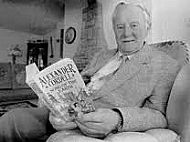 Alexander Cordell (9 September 1914 – 13 November 1997) was the pen-name of George Alexander Graber, a prolific Welsh novelist and author of thirty acclaimed works including Rape of the Fair Country, The Hosts of Rebecca and Song of the Earth.
Alexander Cordell (9 September 1914 – 13 November 1997) was the pen-name of George Alexander Graber, a prolific Welsh novelist and author of thirty acclaimed works including Rape of the Fair Country, The Hosts of Rebecca and Song of the Earth.
This is a tribute by Mike Davies to his novel 'Song of the Earth' and how he was inspired to write it.
This is the story of Mostyn and Bryn Evans and their family – canal bargees struggling to survive the rapid changes of the industrial period as well as trade slumps and mining accidents. following the death of one member of the family in the pit at Resolven, Mostyn Evans moves the family to the town of Aberdare where they get caught up in the miners’ strikes and religious revivals of the 1850s
The Vale of Neath
The Neath & Tennant Canals are the backdrop for much of the action in Alexander Cordell’s exciting portrayal of life on the Welsh canals in Song of the Earth. The Neath canal has a number of locks, tracing their way through the vale, on reaching the lime kilns 4 kilometres to the north, take time to explore your surroundings.
The Neath canal has been a major feature in the Neath valley since opening in1795.
In 1791, the Neath canal act authorised the building of a canal between Glynneath in the north to Melincryddan in the south--a distance of ten and a half miles, it's original purpose was to carry iron ore from various mines and outcrops at the head of the valley to the Venallt ironworks at Cwmgwrach, the Melin-Y Cwrt ironworks and Neath Abbey ironworks (whose ruins survive to this day) the canal was completed in1795.
Traffic on the Neath canal increased from 1799 and reached an annual tonnage of 200.000 tons in the mid 1820's and continued at this level up to the1870's.
The vale of Neath railway, it was only after a court case in 1875 between the Ynysarwed colliery and the Neath canal company, that the right to build tramways over the canal was established ,after which most of the colliers on the western side of the valley built a branch line across the valley bottom and transferred to rail transport the last major coal producer Morgan Stuart Williams of Aberpergwm mansion Glynneath built a bridge over the canal to link with the Great Western Railway in1888.
After most of the collieries in the Neath valley transferred over to the railway, the canal fell into decline, and by the start of the 1st world war, traffic had virtually ceased, after the war, traffic on the canal was almost non-existent, the last toll taken in 1934.
The company of proprietors of the Neath canal navigation being the original company set up in1791 to build the canal, is still in existence today and still own the greater lengths of the canal, some small sections of the canal have been sold off, but the right of navigation over the complete line still exists.
The Neath canal navigation company was able to continue trading over this long period of time due to the fact that since 1865 they have profitably sold water to local industry and in latter years only maintained the canal as a water channel.
The last major extractor of water from the canal was BP Baglan Bay now ceased manufacturing operations in this area. and revenue from water sales has now ended, the future of the canals in the vale of Neath is mainly in the recreational field with possibly small quantities of water being sold to future industrial enterprises.
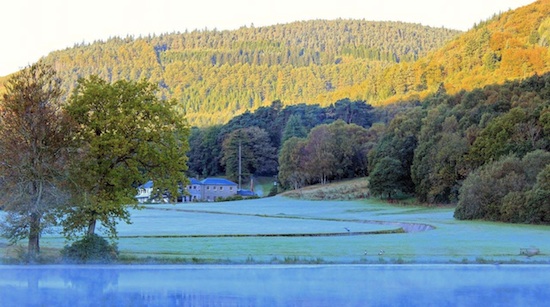
A few miles up the Vale of Neath is Rheola house one of the finest mansions around and in approx 1800's originally owned by the "Vaughan Williams family and was known as "The most loveliest residence in all Glamorgan".
it has fine mountains in the background and stands in the broadest part of the valley with fertile meadows and wooded slopes.
Now let's explore the area and see some lovely scenes.
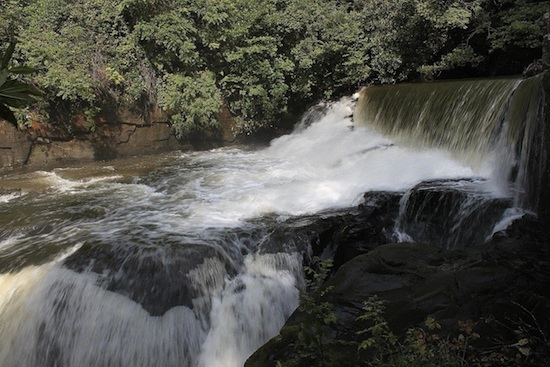
Begin the tour by starting at Aberdulais falls and the large water wheel,
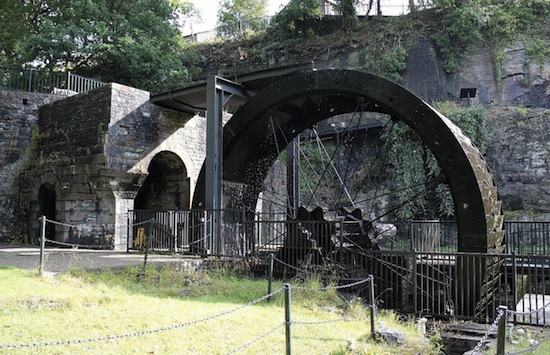
then cross over the road to The Aberdulais Aqueduct The 130 metres aqueduct is the longest aqueduct in South Wales.
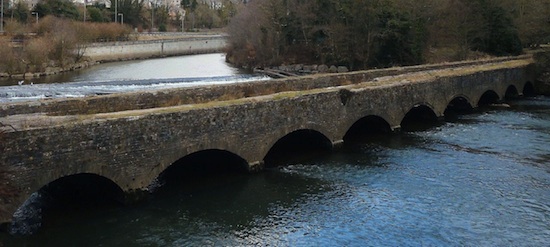
"William Kirkhouse (1776 - 1866) was a canal and mining engineer who lived in Neath, South Wales. Between 1817 and 1824 Kirkhouse was engineer for the Tennant Canal (Neath & Tennant Canal).
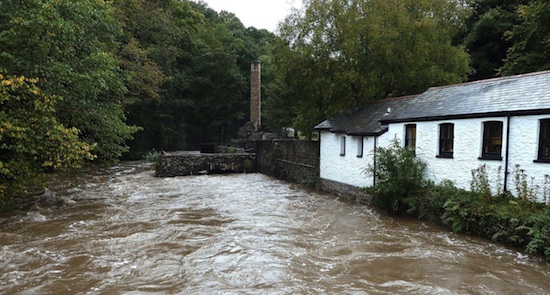
To the right of Aberdulais Aqueduct look at the British legion club house as that was once a toll house for the barges to cross, then behind the Railway Tavern public house walk through the arches, there, you will see, the beautifully elegant skew bridge at Aberdulais basin.

which is situated at the point where the Neath and Tennant canals divide to reach Briton Ferry and Port Tennant (near Swansea) respectively.
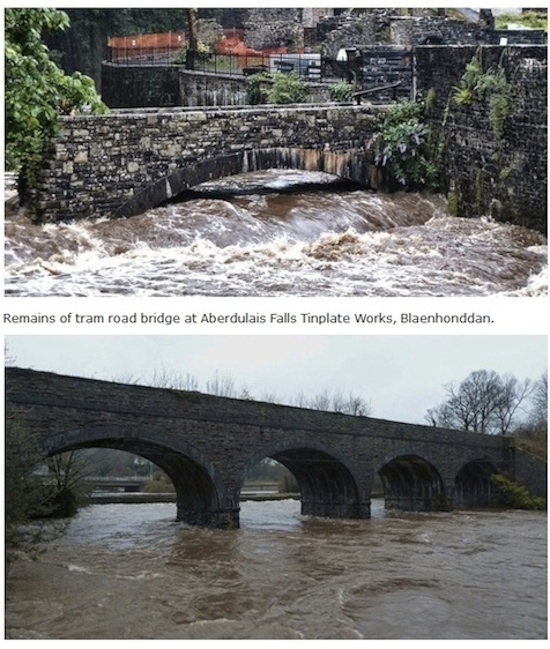
From there go on the A465 to Resolven turn left at the roundabout and park the car in the provided car park, then walk over the road to see the renovated Resolven canal basin which has been brought to it's former glory, from there take a casual stroll along the canal bank which takes you onto the Rhoela locks - a beautiful walk.


The higher vale of Neath Pontneddfechan is also known as waterfall country as there are a complex of falls which are simply breathtaking in all seasons.
Walk in the footsteps of Alexander Cordell where he had the idea to write his story "Song of the Earth" and just look at some of these wonderfull waterfall scenes.
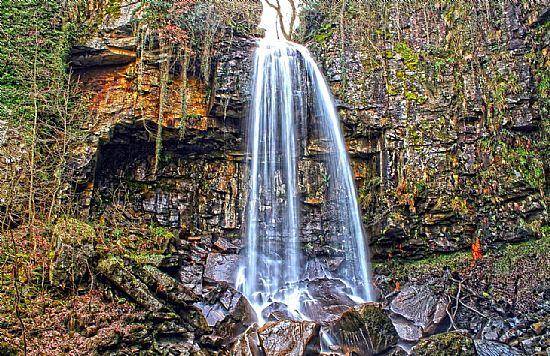
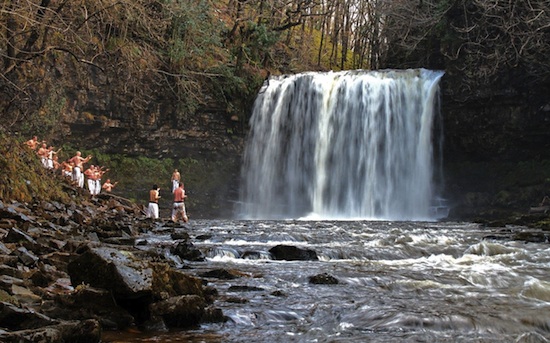
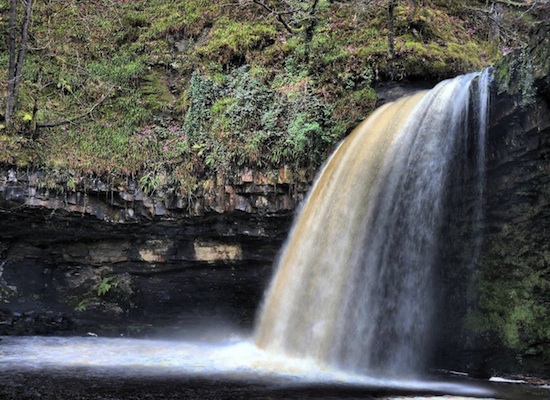
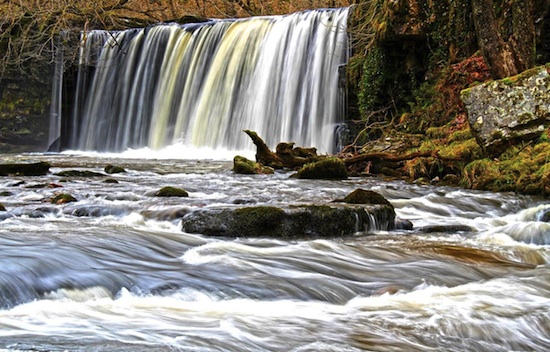
Note... More waterfall scenes cane be seen in 'Melincourt Waterfalls' in menu.

